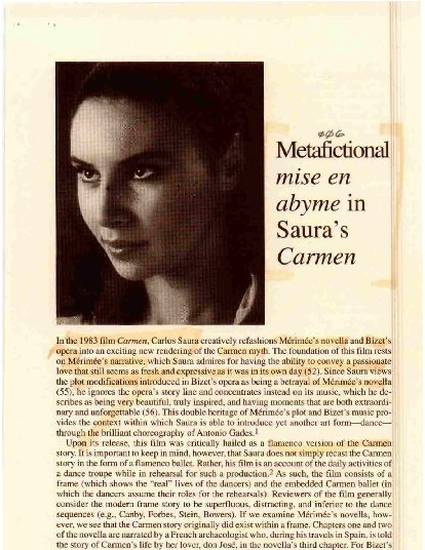
In the 1983 film Carmen, Carlos Saura creatively refashions Mérimée's novella and Bizet's opera into an exciting new rendering of the Carmen myth. The foundation of this film rests on Mérimée's narrative, which Saura admires for having the ability to convey a passionate love that still seems as fresh and expressive as it was in its own day (52). Since Saura views the plot modification introduced in Bizet's opera as being a betrayal of Mérimée's novella (55), he ignores the opera's story line and concentrates instead on its music, which he describes as being very beautiful, truly inspired, and having moments that are both extraordinary and unforgettable (56). This double heritage of Mérimée's plot and Bizet's music provides the context within which Saura is able to introduce yet another art form -- dance -- through the brilliant choreography of Antonio Gades.
Copyright Literature/Film Quarterly, used with permission.
